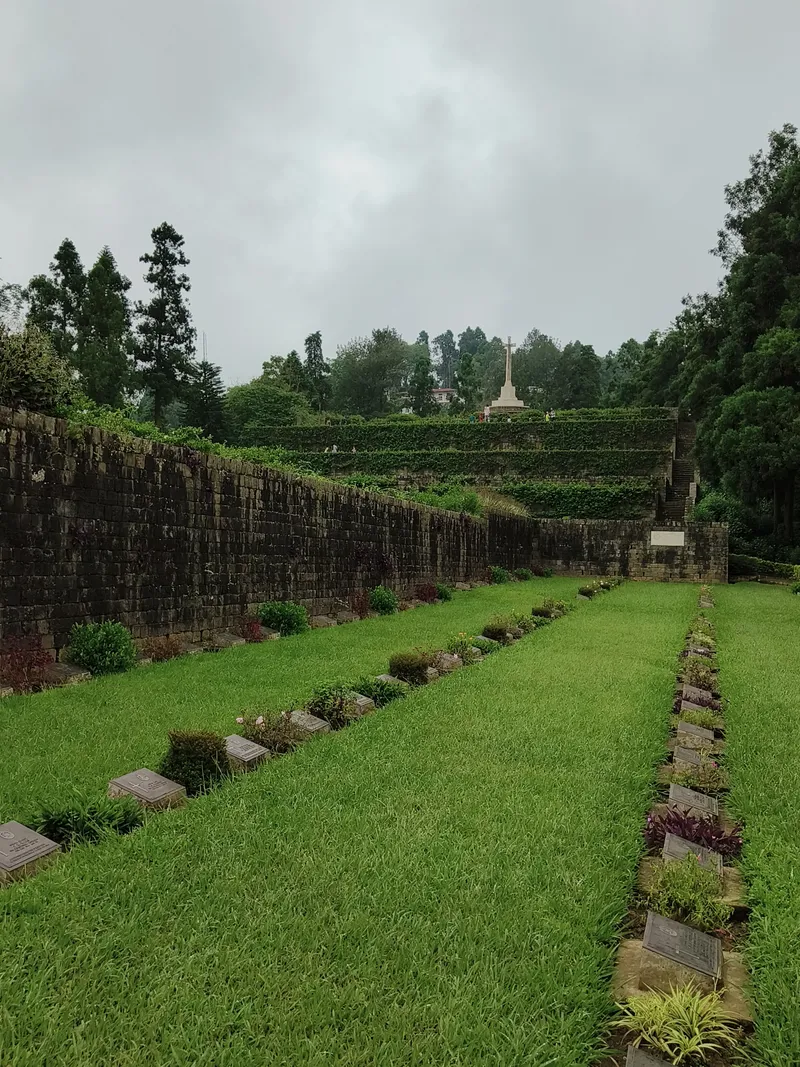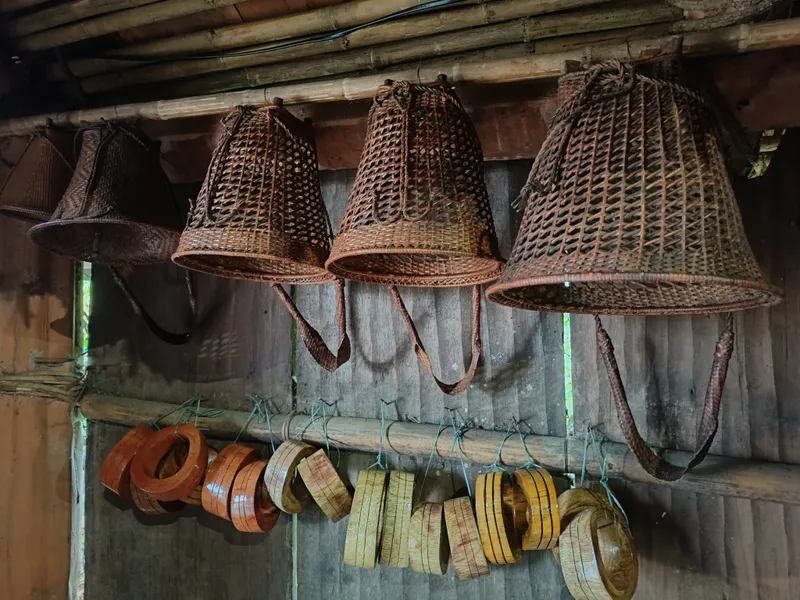A traveller’s guide to 24 hours in Nagaland’s capital, Kohima
Known for its annual Hornbill festival that showcases the rich culture of diverse ethnicities in Nagaland, Kohima is a dreamy town offering a dose of old-world charm.
Travelling to Nagaland was always a dream, having read many tales of its pristine beauty. To my delight, it was how I imagined it to be.
The three-day trip to the ‘Switzerland of the East’ included discovering new sights and sounds, interacting with the locals, and noshing on the traditional cuisine in Dimapur and Kohima.
I will admit Dimapur was beautiful, but it resembled any other bustling city. Of course, it’s not as heavily populated as other metropolitan centres, but it was teeming with activity.
The real gem was Kohima, much known for its annual Hornbill festival that showcases the rich culture of diverse ethnicities in the state.
Most people visit the city for a day, driving from Dimapur along mountainous roads interspersed with lush greenery. The two-hour road trip is a precursor to the beauty you are set to experience in Kohima.
The dreamy town offers a generous dose of old-world charm, making you believe it’s untouched by modernisation. It has a laid-back vibe that hypnotises you to go with the flow.
While 24 hours may seem a tad less to explore the city, there’s still a lot you can pack in without trying hard. From a visit to the War Memorial to the Cathedral of Kohima, and the Kisama Heritage Village—there’s much to see.
Kohima war cemetery

The Kohima war cemetery has nearly lined gravestones and memorials, serving as a reminder of the valour of soldiers who lost their lives in the Battle of Kohima
Located on Garrison Hill, the Kohima war cemetery is believed to have been built in the tennis court of the then-deputy commissioner’s residence. It is here that the Battle of Kohima was fought from April to June 1944.
On the day I visited the cemetery, the rain gods were at their joyous best. Shrouded in a veil of mist, a walk through as many as 1,420 graves and memorials reminded me of a typical setting from an Agatha Christie novel.
It was a stark reminder of the sacrifice the soldiers of the 2nd British division of the Allied Forces made during the Second World War in 1944. The graves were structured by the regiments and nationalities of the deceased. In fact, the Hindu and Sikh soldiers are dedicated a separate area and cremated as per their faith.
While taking a look at the gravestones, I realised many soldiers were young, barely in their early 20s. A part of me couldn’t stop lauding their bravery, but the other was filled with remorse for their families.
It’s easy to spend an hour or two strolling through the well-manicured gardens of the cemetery. The most striking epitaph here is written by classicist John Maxwell Edmonds, which reads, “When you go home, tell them of us and say for your tomorrow, we gave you our today.” These words are likely to stay with you long after you’ve left the place.
There was another reason why this visit was so memorable. Along with our group of four, we also had a local friend who showed us around. Interestingly, his great-grandfather fought the war, which is why we were privy to so many tales told and untold!
Cathedral of Kohima

The Kohima Cathedral church's facade resembles a Naga home
It’s hard to miss the Cathedral of Kohima’s unique structure, also known as Mary Help of Christians Church. From a distance, it may not pass off as a church. That’s also because its facade is characteristic of a Naga house with steeply pitched roofs to withstand rainfall.
The church towers over Kohima, blending into the hill it is situated on. Its construction began in 1986 and was consecrated only in January 1991.
It is believed that the expenses for building the structure were borne by the Japanese, who wanted to create a memorial for the soldiers of their nationality who lost their lives in the Battle of Kohima.
While the church houses the 16-ft high carved wood crucifix—said to be one of Asia’s largest crosses—we didn’t get a glimpse of it. It was a Sunday, and while the church was open for mass, we reached a little later and missed catching a view.
You can also stay back to enjoy a bird’s eye view of Kohima. It was cloudy and misty when we visited, but it had its own charm. Don’t let the weather stop you from giving in to the many photo-ops here.
Kisama heritage village

The kitchen in an Angami tribe home
About 12 kms from Kohima is the Kisama heritage village—the venue for the heavily visited Hornbill festival every year. As you enter the complex, you will be mesmerised by each of the structures that stand here. There are 16 dominant tribes in Nagaland, with the majority of the population belonging to the Angami community.
Walk around the village, noticing the minute differences between morungs or homes of each tribe. Every gateway has a symbol—whether it’s a weapon, wooden figurines of humans or animals, or even traditional log drums.
Speak to the locals and allow them to show you the insides of their homes. We got an opportunity to enter an Angami tribe kitchen, where everyone was seated around a hearth, waiting for the meat to be prepared.
There was millet all around—a staple in the region. The utensils are made from wood, including teak wood, while large quantities of grains are stored in barrels.

Zutho, a local fermented rice beer served with dried fish and chana as chakna
That’s not all. We also tried zutho, a local rice-fermented drink, which we paired with dried fish and chana as munching. They also served a version of ghugni made with chickpeas, often eaten in Odia, Bengali, and Assamese households.
As the Hornbill festival completes 25 years this year, locals believe the heritage village will witness much fanfare!
What else?
There are also some local markets in Kohima, including the Naga Bazaar. Since we visited the city on Sunday, everything was closed. However, it is believed to be a great place to shop for handicrafts, textiles, and food items.
Fact file
How to reach: Dimapur is the only airport in Nagaland. There are frequent inbound flights from Kolkata, Guwahati, and Imphal. If you are flying in from cities other than these, it is best to fly to Guwahati and catch the next flight to Dimapur.
There are some direct flights from Delhi. Again, Dimapur is the only railway station in the state, while Guwahati has better connectivity.
Edited by Suman Singh



![[Exclusive] Being calm in the face of chaos, actor Tamannaah Bhatia finds solace in meditation](https://images.yourstory.com/cs/210/3fb20ae02dc911e9af58c17e6cc3d915/TamannahBhatia1600x800-1719395010347.jpg?mode=crop&crop=faces&ar=16%3A9&format=auto&w=1920&q=75)



